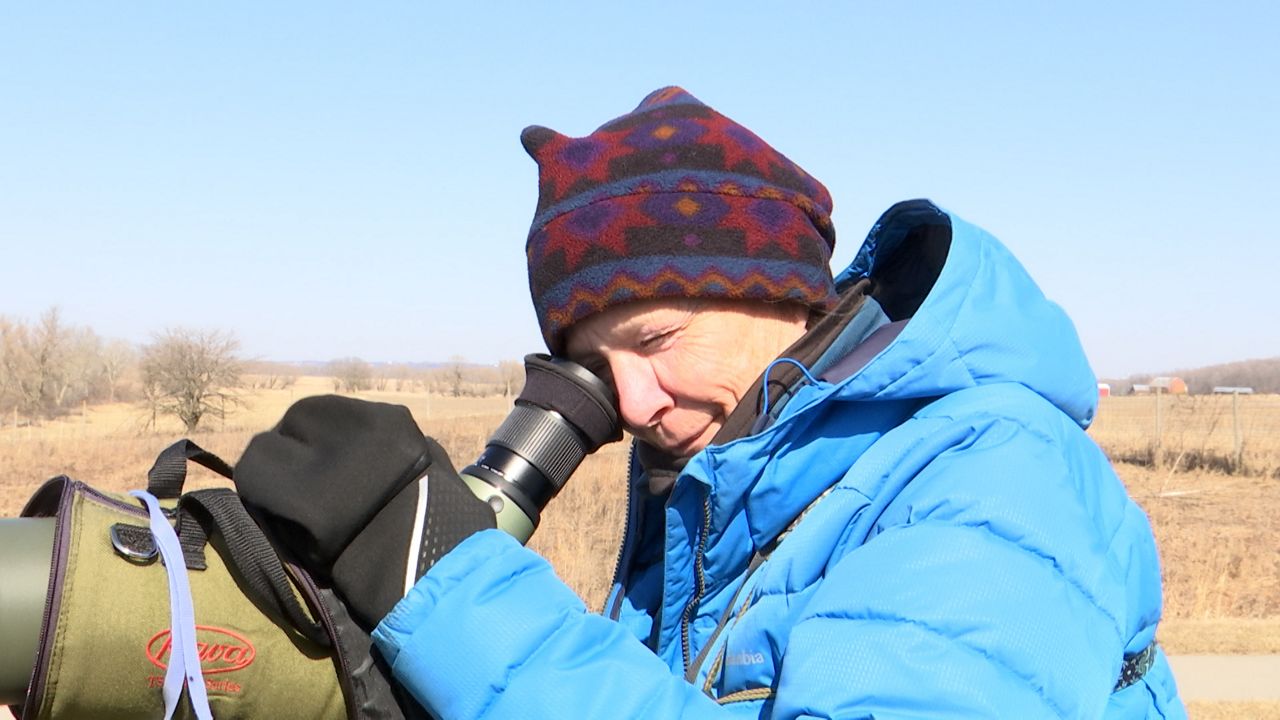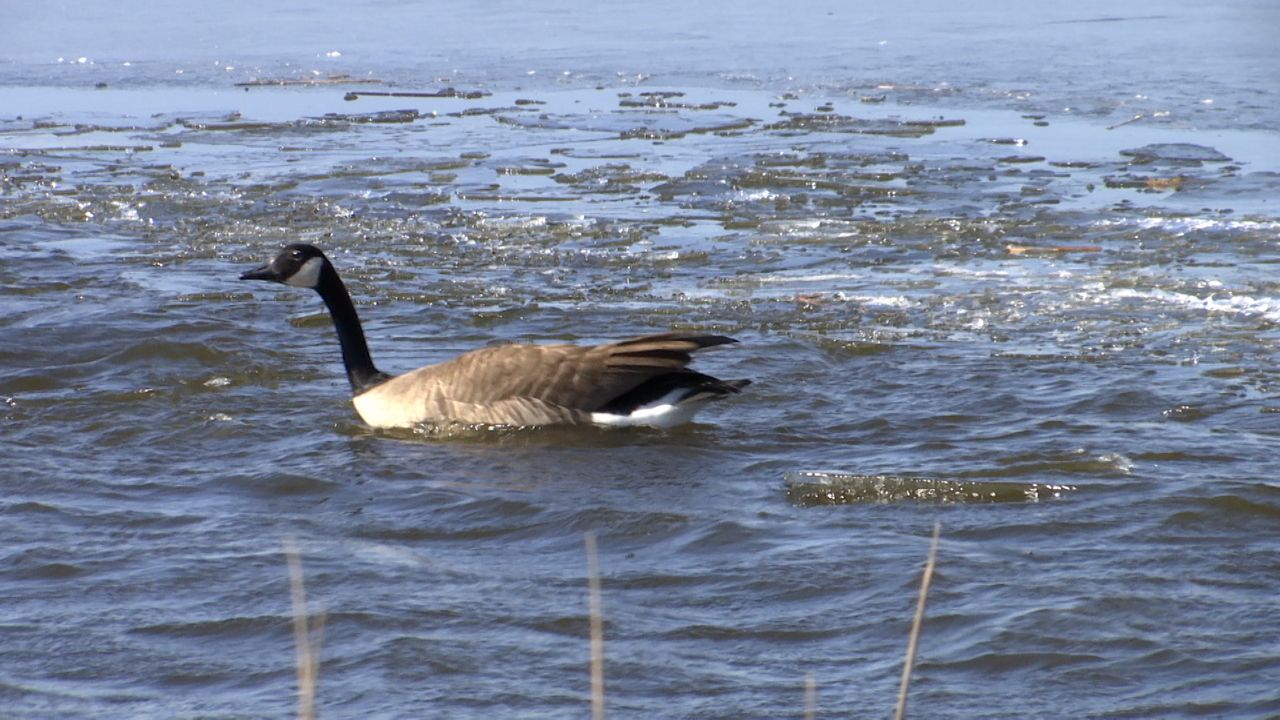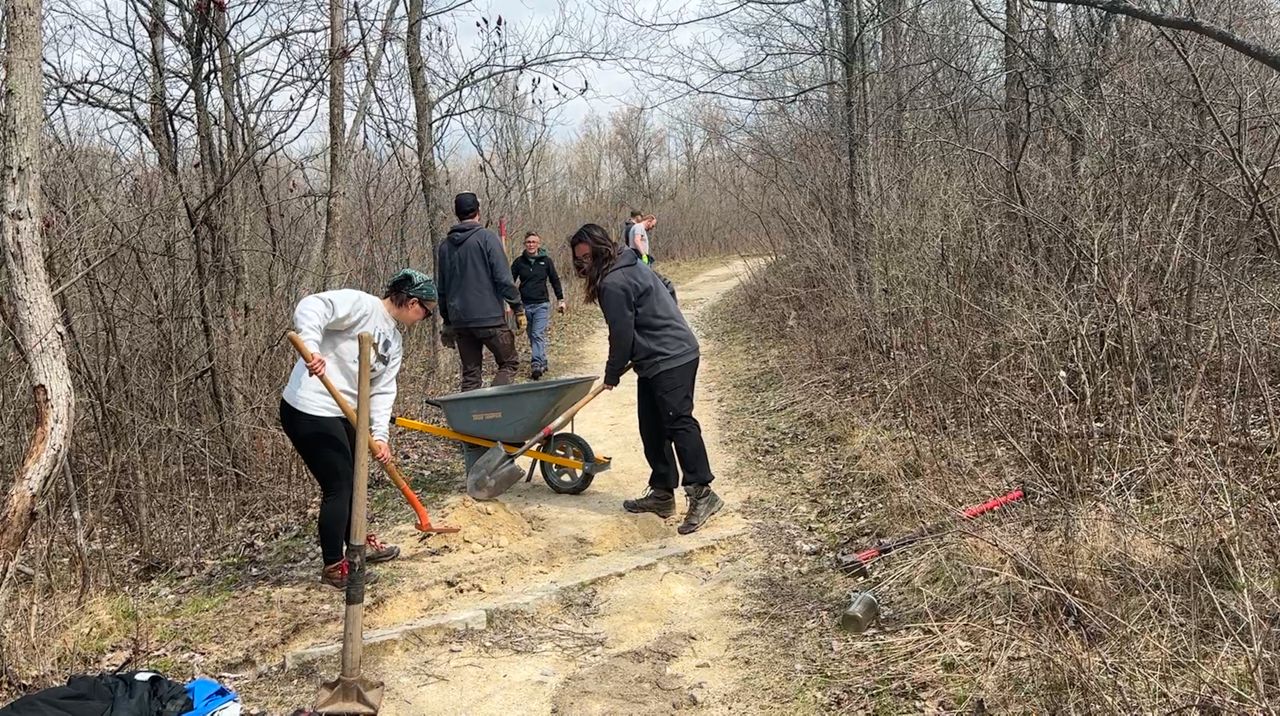HORICON, Wis. — Kathy Kershaw loves birding. It’s why on an unseasonably warm March morning she traveled from her home near Madison to the Horicon Marsh, a 30,000-acre wetland area in Dodge County.
Horicon Marsh is known for its wide variety of bird species.
“Going out and seeing the birds is just really enjoyable,” said Kershaw as she looked through a magnifying lens out onto the marshland below.
Kershaw said she has noticed many migratory birds coming back to Wisconsin earlier than usual. It is something she has kept track of using the popular app and website, eBird, which was created by the Cornell University Lab of Ornithology.
“At least four of the species that I found today came up as rare that they are here that much earlier,” said Kershaw.

Liz Herzmann is a wildlife educator with the Wisconsin Department of Natural Resources, based at Horicon Marsh. Given the warm weather seen throughout February and March, Herzmann said she isn’t surprised that visitors are seeing migratory bird species returning in early March.
Herzmann said some of the early returners to Wisconsin are Canada geese and sandhill cranes.
“They are just using those weather cues to get up here a little bit sooner,” said Herzmann.
Unlike some birds that travel to tropical locales when winter sets in, Herzmann said the geese and cranes often only travel just south of the snow line to places like southern Illinois and Indiana.
“When they see opportunities to move them up using less energy, and food availability, they may zip up a little bit sooner,” said Herzmann.
Herzmann said some people worry about how birds will survive if they return too early and a cold snap sets in. Fortunately, she said heartier birds like the geese and cranes generally fare well even if temperatures dip well below freezing.

However, it can be a different story for other bird species more dependent on warm weather.
“When we start seeing some of our migrant songbirds come up, like bluebirds or tree swallows, that are more insectivores, and we get that cold snap, that can be a real issue because they are losing that food source,” said Herzmann.
Herzmann said there is no magic date for when certain birds should be making their return to Wisconsin. It can vary by year. However, she said she is grateful for the information that birders share across the state so that scientists can track long-term data trends.
It is information Kershaw said she’s more than happy to share, while reaping the benefits of a warm and sunny morning to enjoy nature.
“It is a beautiful day today, very enjoyable,” said Kershaw.
To learn more about Horicon Marsh, you can visit the DNR website.









